French Recipes, Podcast Episodes and France Travel Tips!
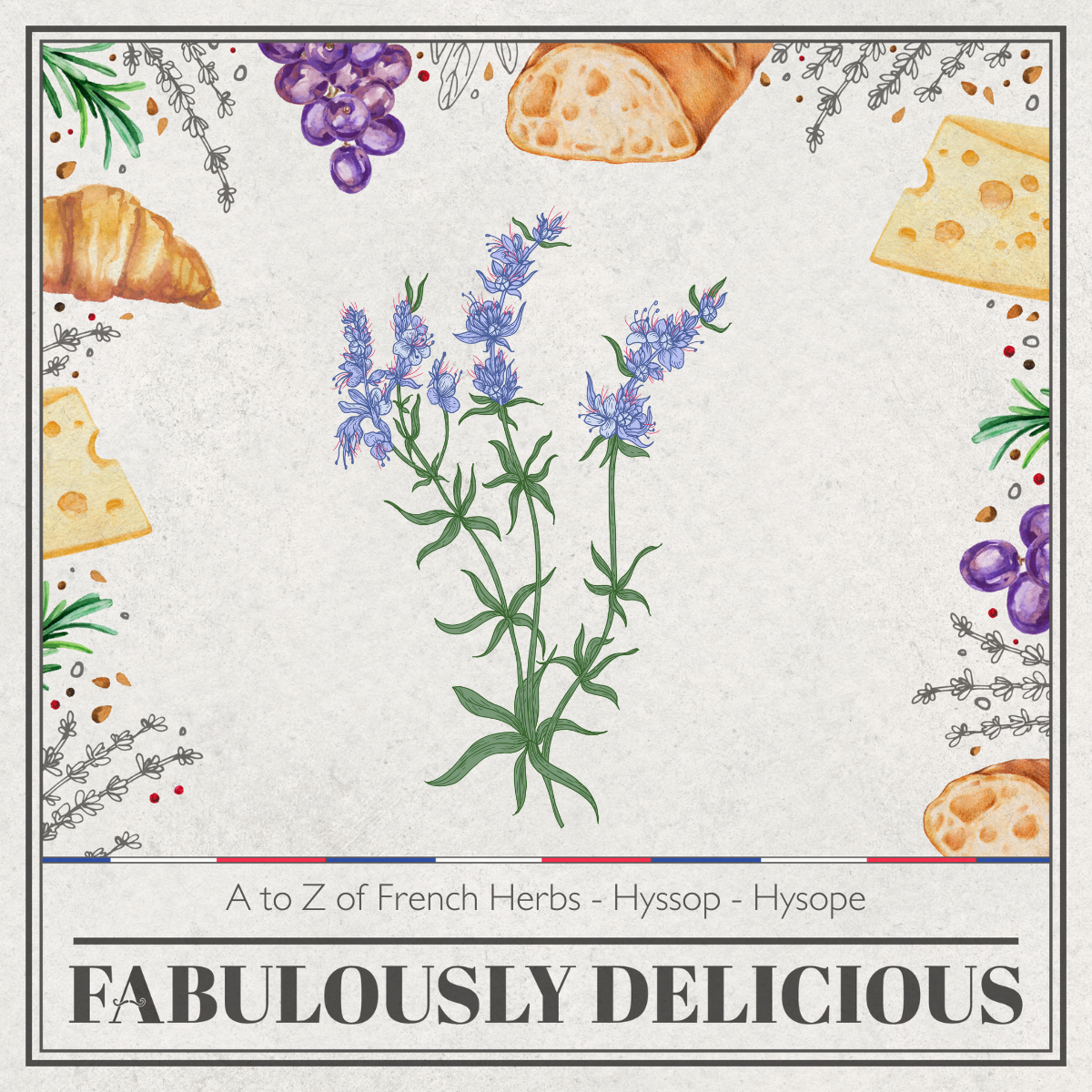
A to Z of French Herbs - Hyssop - Hysope
Hyssop in French is pronounced Hysope. Hyssops's botanical name is Hyssopus Officinalls and is part of the Lamiaceae family which includes mint. Other names for the herb include hiope, issop and lissop.
This evergreen herb is grown for its aromatic leaves and flowers. It has a light bitter taste and an aroma similar to mint and is used in flavouring food and drinks and also as a herbal remedy or medicinal plant.
Found native in Southern Europe, the Middle East and the region surrounding the Caspian Sea but it is also now found in North America.

A to Z of French Herbs - Horseradish - Raifort
Horseradish is a perennial plant that is part of the Brassicaceae family which includes mustard, wasabi, broccoli, cabbage, and radishes.
In French Horseradish is called raifort. The word horseradish is attested in English from the 1590’s and combines the word horse which was used in a figurative sense to mean strong or coarse and the word radish.
Although some believe that the term horseradish actually comes from a mispronunciation of the German word meerrettich as mare radish. Although many scholars have disputed this idea.

The Story of Julia Child
Julia Childs was born Julia Carolyn McWilliams on Thursday the 15th of August 1912 in Pasadena, California to parents John McWilliams Jr and Julia Carolyn (Caro) Weston. Her father was a land manager and graduate from Princeton University and her mother was a paper company heiress. Julia was the oldest of three children, she had a brother John McWilliams III, and a younger sister Dorothy Cousins.
In 1912, Pasadena, California was a charming and burgeoning city known for its picturesque landscapes, cultural attractions, and emerging community. Pasadena's natural beauty was one of its main attractions.
The city was nestled at the base of the San Gabriel Mountains and was known for its stunning views, mild climate, and lush gardens. The Rose Bowl, which would become an iconic venue, was constructed ten years later in 1922. Pasadena was characterized by a mix of architectural styles.
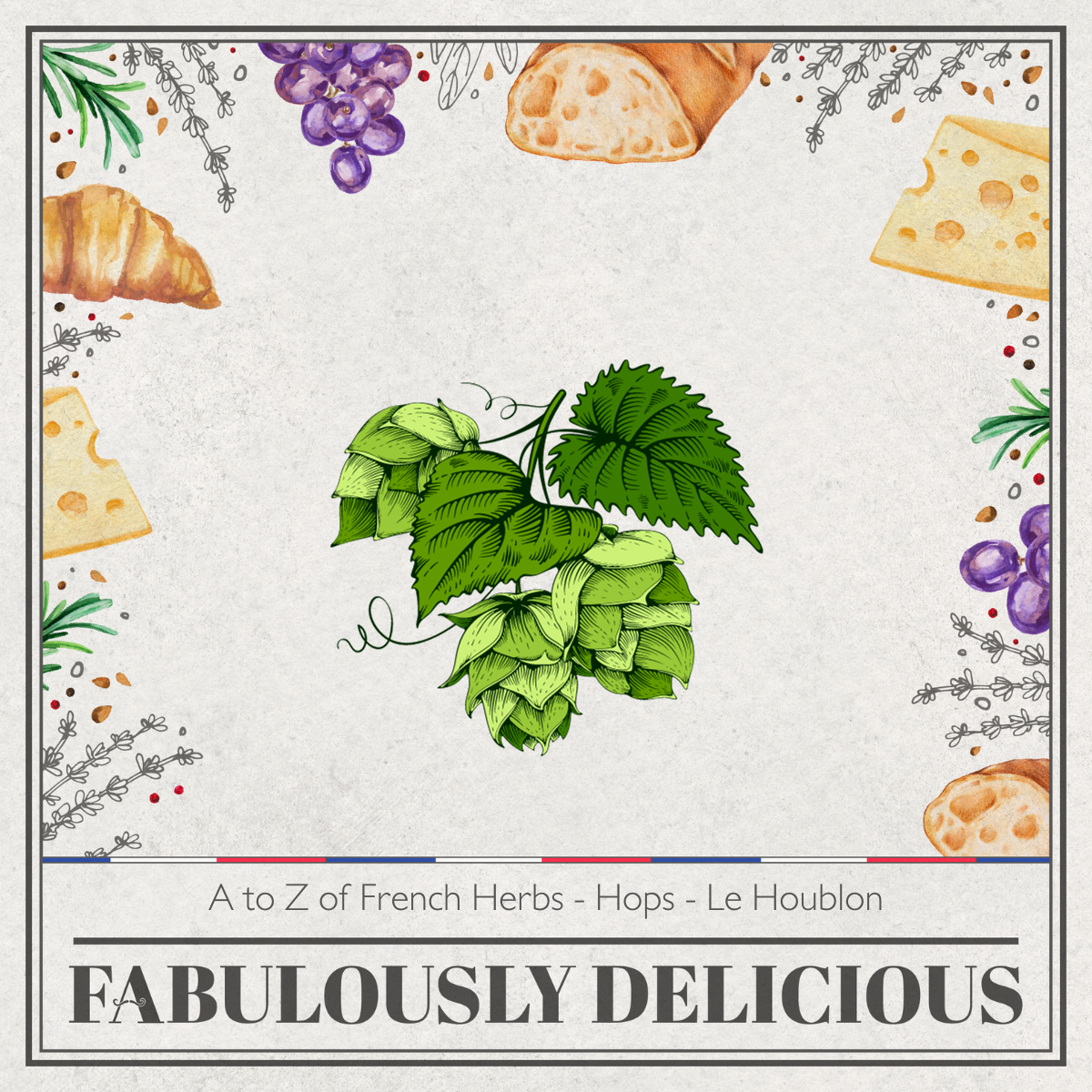
A to Z of French Herbs - Hops - Le Houblon
Nestled within the heart of France's culinary and brewing traditions is the humble yet remarkable hops plant, also known as "Hobs." With its delicate green cones, hobs bring a touch of botanical elegance to both the brewing vat and the kitchen stove.
Renowned for its bittering, flavoring, and aromatic qualities, hops have woven themselves intricately into the fabric of French culture, leaving an indelible mark on the realms of beer manufacturing and gastronomy.
Hobs' influence extends beyond the brewing barrel. In French cuisine, this versatile plant has also carved a unique niche. As an aromatic ingredient, hops impart distinctive earthy and floral notes to culinary creations, adding depth and complexity to dishes.
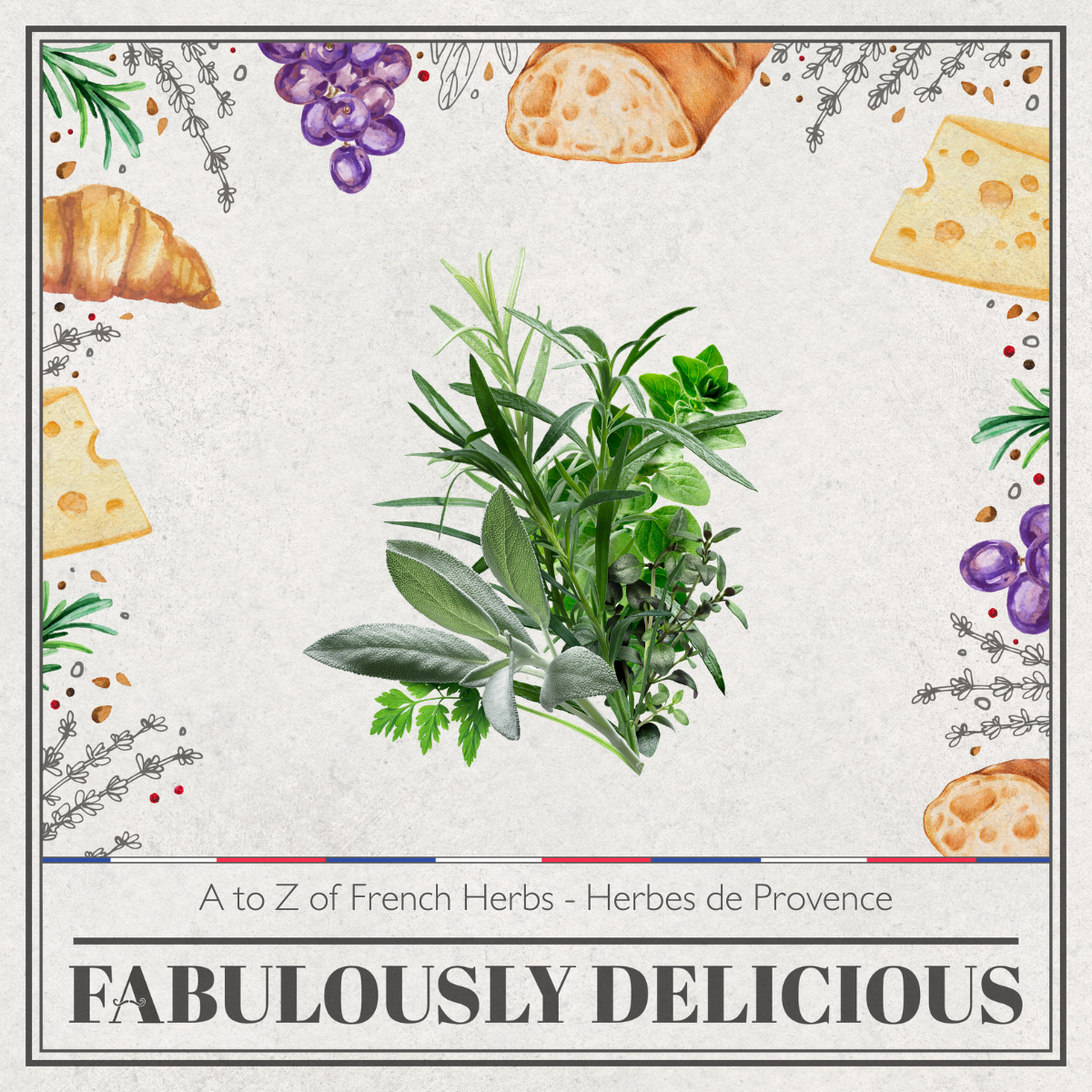
A to Z of French Herbs - Herbes de Provence
Herbs de Provence is pronounced the same in French as it is in English really. The key difference is in the spelling. In French it’s spelt Herbes de Provence.
Herbs de Provence is a dried herb mix that is sold now all over the world due to it’s popularity in the US in the 60’s when it was featured by Julia Child in her Art of French Cooking book series in the dish Poulet Saute aux Herbes de Provence. But the first written mention of the mixture of Provencal herbs dates back to 1910, in the book La Cuisine Provençale, by Jean-Baptiste Reboul.
Spice and herb blends are not uncommon in France and around the world of course. In French cuisine you also have the previously covered in this series Bouquet Garni and the Fine Herbes blend.

A to Z of French Herbs - Anis Vert - Green Anise
Another delightful aspect of my culinary exploration in France is the discovery of "Anise Vert," also known as green anise or sweet cicely. This lesser-known herb has a delicate licorice-like flavor, which adds a unique and aromatic touch to various dishes.
Living in France has truly expanded my culinary horizons, and these lesser-known dishes, like Fouée and Tarte Tropézienne, have proven that the country's gastronomy is a treasure trove of hidden delights waiting to be discovered by adventurous palates.
Anis Vert or Green Anise is a species of herb that comes from the Apiaceae family of plants and related to Mint, Marjoram, Sarriette and Coriander.

A to Z of French Herbs - Wild Garlic - Ail des Ours
Wild garlic, also known as Ail des Ours, is a deliciously fun herb to use. Its subtle garlic flavour and vibrant green leaves add a rustic, wild touch to many dishes.
However, the real magic of wild garlic lies in the tradition of "wild picking", where chefs and cooking enthusiasts set out on adventures in the woods in search of this deliciously fragrant plant. This thrilling quest to harvest wild garlic creates an unforgettable culinary experience, combining a passion for French cuisine with the joy of connecting with nature.
But beware as not all plants are the same and sometimes wild garlic resembles in the forest, fields where they’re found other not so good for you plants.
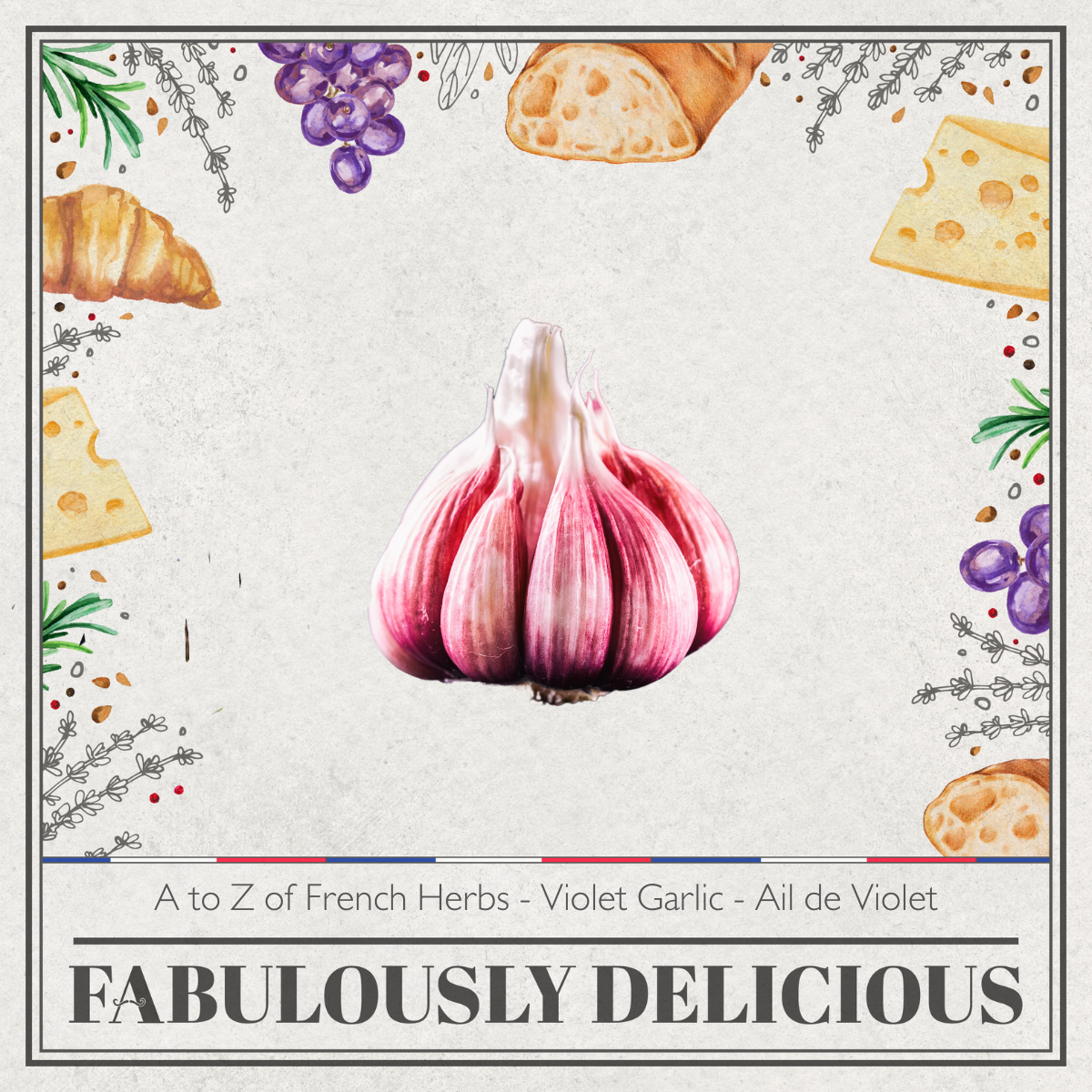
A to Z of French Herbs - Violet Garlic - Ail de Violet
Violet Garlic as its name suggests, is characterised by its purple colour. Cultivated on the hillsides of Cadours, hung in barns and sheds and braided by hand. It’s a beautiful looking garlic with a great taste.
Violet Garlic in France is an AOP garlic. AOP meaning Appellation d'origine protégée. The protected designation of origin (POD) is a type of geographical indication of the European Union and the United Kingdom aimed at preserving the designations of origin of food-related products. The designation was created in 1992 and its main purpose is to designate products that have been produced, processed and developed in a specific geographical area, using the recognised know-how of local producers and ingredients from the region concerned. The violet garlic of Cadour is said to be the oldest garlic in France.

A to Z of French Herbs - Rose Garlic - L’ail Rose de Lautrec
Rose Garlic has a lighter flavour than regular white garlic. It definitely has a different fragrance to other garlics.
L’ail Rose de Lautrec is also from the Midi-Pyrénées. Legend has it that the pink garlic of Lautrec appeared in the middle Ages. A travelling salesman from far away stopped at a place called the Oustallarié Lautrec to eat. Having little money, he embellished his meal with pretty pink cloves he had bought with his and left some behind. The hostel staff planted them and the pink garlic of Lautrec was born.
Rose garlic is known for its pink coloured hue. Hue is the outside skin of the garlic. It has an extended dormancy in its growing period in Spring, which means that its harvesting period is usually around June-July. The garlic is bound into clusters called "manouilles”.
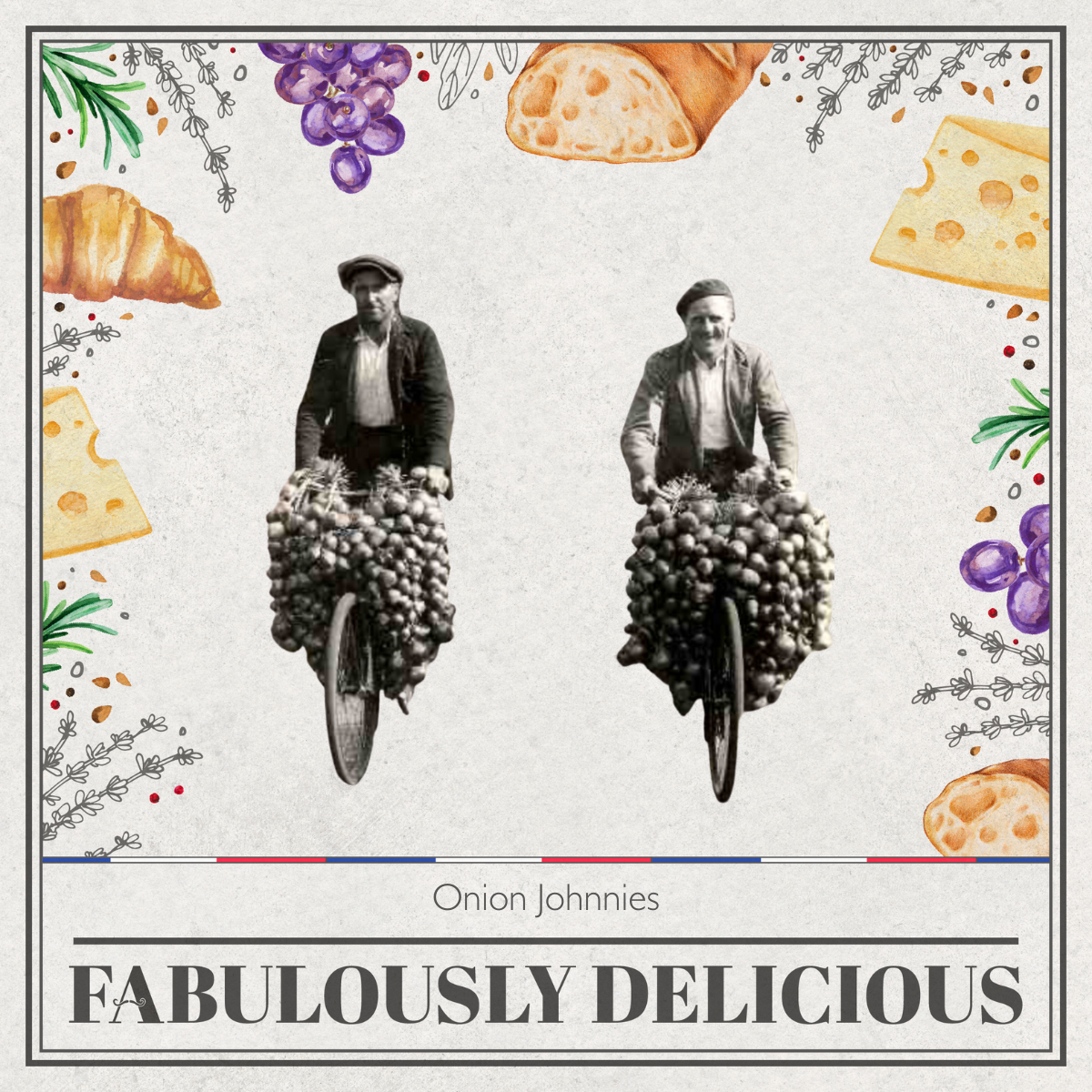
Onion Johnny
The Roscoff Onion is a culinary treasure hailing from the coastal town of Roscoff in Brittany, France. Renowned for its subtle sweetness and distinct pink hue, this onion variety has graced the tables of gourmands and chefs alike for centuries.
We can't overlook the indispensable role onions play in French cooking, especially in the iconic Soup L’Onion, a beloved classic that epitomizes the heartwarming essence of French comfort cuisine.
But what about the indispensable role they’ve played in French culture? Well, the Onion Johnny is a great example of how important the simple, eye tearing, vegetable the onion is. It might be a staple in many recipes and cuisines around the world but to French culture it’s iconic.

A to Z of French Herbs - L'ail du Lomagne
In the world of culinary delights, France is renowned for its exceptional cuisine and unique flavors. At the heart of French gastronomy lies the concept of "terroir," an expression of a region's distinct character and natural influences on food production.
From the rolling vineyards of Bordeaux to the fertile fields of Provence, terroir encapsulates the geographical factors that shape the taste and quality of ingredients. French cooking embraces this philosophy by utilizing the finest local produce, such as fragrant herbs, succulent meats, and exquisite cheeses.
The result is a harmonious fusion of flavors, where each ingredient contributes to the artistry and sophistication of French cuisine.
In an area of France known for its Fois Gras and Hazelnuts is the region of Lomagne which also produces its own garlic variety the L’Ail Blanc du Lomagne, White garlic of Lomagne.

A to Z of French Herbs - Garlic - Ail
Garlic in French is pronounced ail. The word garlic derives from old English, garlēac, meaning gar (spear), and leek, as a 'spear-shaped leek.
Some would say it’s more a vegetable than a herb but in French cuisine, it’s considered a quintessential herb. Garlic is part of the lily family which also includes onions, leeks, and shallots. Allium sativum is a perennial flowering plant that grows from a bulb. It has a tall, erect flowering stem that grows up to 1 m (3 ft).
Whilst white garlic originated in Asia they think over 7,000 years ok it is now found all around the world. It’s used for culinary and medicinal purposes. Medicinally it’s often used as an herbal remedy for colds and is thought to reduce blood pressure, and cholesterol and even been proven to have antibiotic properties

A to Z of French Herbs - Fine Herbs - Fine Herbes
Fine herbs, also known as fines herbes, refer to a classic French blend of delicate herbs commonly used in French cuisine. The term "fine herbs" translates to "fine" or "delicate" herbs in English.
The blend typically includes a combination of four specific herbs:
Flat-leaf parsley or Italian parsley is commonly used in fine herb blends. It has a fresh and slightly peppery flavor.
Chives are slender, green herbs with a mild onion-like flavor. They provide a subtle, delicate taste to the herb blend.
Tarragon is an aromatic herb with a unique flavor that is slightly reminiscent of anise or licorice. It adds a distinct touch to fine herb mixtures.
Chervil is a delicate herb with a mild, slightly anise-like flavor. It resembles parsley but has a more subtle taste. Chervil is an essential component of fine herb blends.
These four herbs are finely chopped or minced and combined in equal proportions to create the fine herb blend. The mixture is used to enhance the flavors of various dishes, including omelets, soups, sauces, poultry, seafood, and vegetable preparations. The fines herbes blend is particularly popular in French cuisine and provides a fresh and aromatic touch to dishes.

French Chef Profile - Sebastien Lutuad
French chef based in Sydney Australia, Sebastien Lutaud. Originally from Lyon, he moved to Australia at a young age with his family who had patisseries in Australia.
Then he moved back to France to start his chef career and then back to Australia where he has a family and runs successful French restaurants.
Sebastien is a great example of how French food can influence your life and how some of the founding fathers of French cuisine can influence a career.
It’s always exciting to talk with chefs, especially French chefs on the podcast and I hope you enjoy this episode of Fabulously Delicious by clicking the photo of Sebastien to go to the link for the episode.

A to Z of French Herbs - Fennel - Fenouil
When is a herb, not a herb but a spice? Actually whilst we are on the subject when is an herb, not only a spice but also a vegetable? When it’s Fennel that’s when. Yep, Fennel is not just an herb but it’s also a spice depending on the variety of vegetables.
Fennel in French is pronounced Fenouil. Fennel came into old English from the old French word fenoil which in turn came from the Latin word faeniculum, a diminutive of faenum, meaning "hay".
Fennel, with its delicate aroma and distinct licorice-like flavor, has been an integral part of French cuisine for centuries. From the kitchens of Michelin-starred restaurants to traditional home cooking, fennel plays a significant role in enhancing the flavors of various French dishes. Let's delve into the origin and history of fennel in France and explore its versatile uses in the country's culinary traditions.

Celebrating the Finest Experts in French Cuisine
Today we are celebrating the 2nd anniversary of Fabulously Delicious. Yes, that’s right, we are in our third season, 2 years, 84 episodes, 51 guests, and over 49 hours of content devoted to French food. So this episode is a celebration of some of my favorite parts of just a few of those episodes.
The very first episode of Fabulously Delicious was with American Pastry Chef Molly Wilkinson. Molly is an Instagram sensation and runs a fabulous online pastry cooking school as well as doing cooking classes in her fabulous apartment in Versailles. I had to ask the most important question when it comes to Macarons and that is what is the difference between a Macaron, Macaroon, and Macron?

A to Z of French Herbs - Elderflower - Fleur de Sureau
Foraging in France can be a delightful adventure, but it's crucial to be aware of the potential dangers that lurk among the bountiful flora. Among the treasures of the French countryside is the fragrant Elderflower, known for its culinary and medicinal uses.
However, it's important to exercise caution when foraging elderflowers, as certain parts of the plant, such as the leaves and unripe berries, should never be consumed due to their toxic properties. Proper identification and knowledge of safe usage are essential to ensure a positive foraging experience.
In addition to Elderflower, France is home to various other plants that demand careful consideration.

A to Z of French Herbs - Dill - Aneth
Dill
Dill in French is pronounced Aneth. It’s a hardy and fragrant annual plant that in your garden will grow to around 60cm tall. It has very fine blue-green leaves with deep yellow flowers. Both the leaves and seeds are used in cooking throughout the world. It’s related to celery and tends to replant itself and spread widely which you should take note of if planting and growing your own.
Dill is an annual herb from the celery family Apiaceae and isn’t native to European countries despite its use in many. It’s native to North Africa, Chad, and Iran, but is widely grown throughout Eurasia. It was introduced to Europe by the Romans who thought that dill symbolized joy and brought it with them everywhere to make them happy of course. In the Middle Ages, it was thought that dill had magical properties to protect houses and so would be hung around the house.

A to Z of French Herbs - Corriander
Taste is a fascinating aspect of human perception, as it varies greatly from person to person. It's often said that one person's delicacy is another person's distaste, highlighting the vast differences in individual preferences. The notion that coriander can taste heavenly to some while resembling soap to others is just one example of the intriguing and diverse world of taste.
Throughout the culinary landscape, there are numerous instances where people's taste buds diverge, forming a rich tapestry of unique and often polarizing flavor experiences.
Coriander yes is probably more well-known in Asia or Middle Eastern cuisines but it’s also used in French cuisine.

A to Z of French Herbs - Chives
Chives in French are spelled Ciboulette and are also known as Cive. Their scientific name is Allium schoenoprasum and are a species of flowering plant in the Amaryllidaceae family which are a group of perennial bulbous plants that interestingly are bisexual apparently, how a plant is bisexual I have no idea but hey each to their own. You go chives!
Chive in English derives from the French word Cive from ceps the Latin word for onion. In the middle ages, the chive was known as a rush leek. In 80 A.D. by Marcus Valerius Martialis in his "Epigrams". “He who bears chives on his breath, Is safe from being kissed to death”.
The Romans believed chives could relieve the pain from sunburn and even a sore throat. They believed eating chives could decrease blood pressure and act as a diuretic. Dutch farmers in the 19th century fed their cattle chives to give the milk a different taste and Romanians used chives in fortune telling and hanging dried chives around the house to ward off disease and evil.

